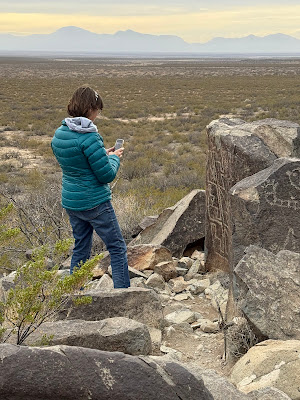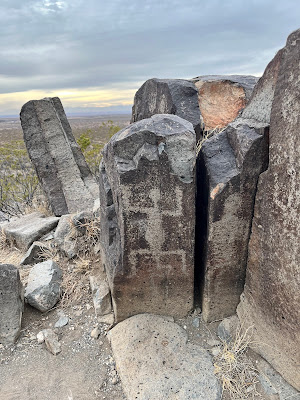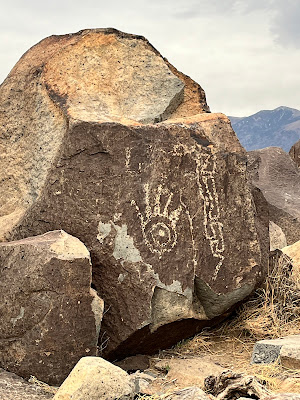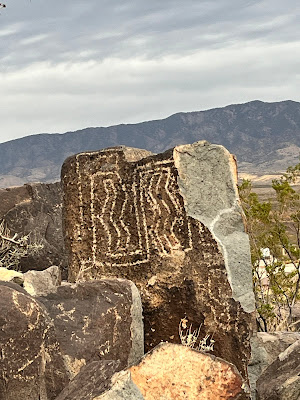Not snow! The sand at White Sands National Park in south-central New Mexico looks so much like snow in the photos, even we could be fooled - and we were there!
The day we were at White Sands, a fresh breeze was blowing, and it was so cool to walk along the sand dunes, and look behind us… just moments after we had left our footprints, they vanished in the wind.
The white sand is actually fine particles of gypsum, which maintains a cool temperature even on the hottest days of summer. At 265 square miles, the gypsum dunefield at White Sands is the largest its kind on Earth!
 |
| No ice here! |
 |
| Just loved the desert brush on the white sands! |
The park is completely surrounded by the White Sands Missile Range, and we noted signs as we were driving through that warned of unexpected road closures due to missile testing. Thank goodness we were there when they were taking a break from firing missiles all over. did you know that White Sands Missile Range was also one of the key locations of the Manhattan Project? The first atomic bomb was developed here during world War II. which developed the first atomic bomb during World War II. Testing of the first atomic bomb took place just north of the park.
There is a very interesting museum on the grounds of the White Sands Missile Range, which we visited. We had to get clearance, and that meant we had to provide our passports and have photo ID taken prior to entering the military base. It was all very official, though I wonder if it was all just for show? It seemed just too easy, and the guards were just too friendly!
 |
| Missiles on display outside the museum |




















































